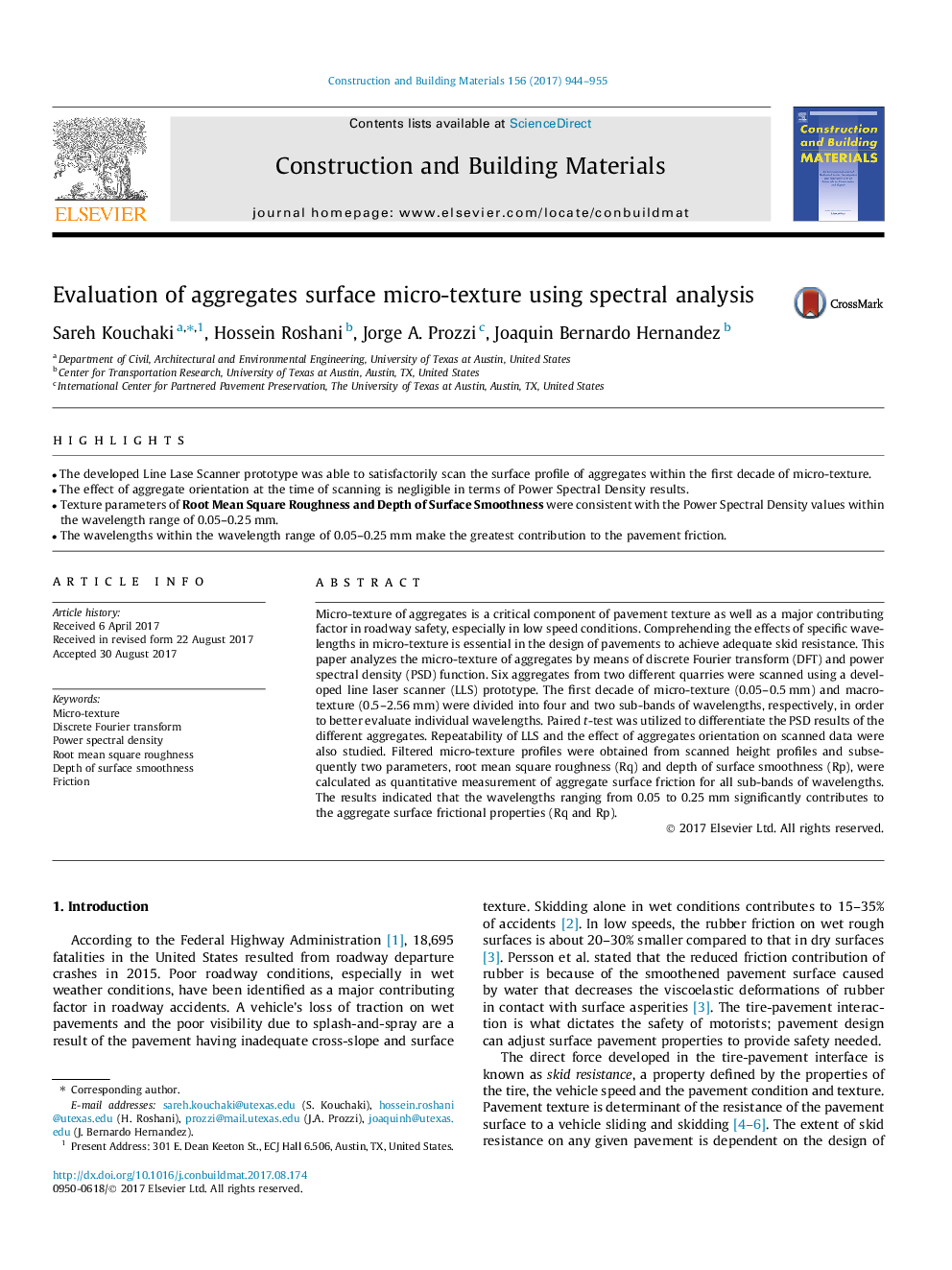| Article ID | Journal | Published Year | Pages | File Type |
|---|---|---|---|---|
| 4912722 | Construction and Building Materials | 2017 | 12 Pages |
Abstract
Micro-texture of aggregates is a critical component of pavement texture as well as a major contributing factor in roadway safety, especially in low speed conditions. Comprehending the effects of specific wavelengths in micro-texture is essential in the design of pavements to achieve adequate skid resistance. This paper analyzes the micro-texture of aggregates by means of discrete Fourier transform (DFT) and power spectral density (PSD) function. Six aggregates from two different quarries were scanned using a developed line laser scanner (LLS) prototype. The first decade of micro-texture (0.05-0.5Â mm) and macro-texture (0.5-2.56Â mm) were divided into four and two sub-bands of wavelengths, respectively, in order to better evaluate individual wavelengths. Paired t-test was utilized to differentiate the PSD results of the different aggregates. Repeatability of LLS and the effect of aggregates orientation on scanned data were also studied. Filtered micro-texture profiles were obtained from scanned height profiles and subsequently two parameters, root mean square roughness (Rq) and depth of surface smoothness (Rp), were calculated as quantitative measurement of aggregate surface friction for all sub-bands of wavelengths. The results indicated that the wavelengths ranging from 0.05 to 0.25Â mm significantly contributes to the aggregate surface frictional properties (Rq and Rp).
Keywords
Related Topics
Physical Sciences and Engineering
Engineering
Civil and Structural Engineering
Authors
Sareh Kouchaki, Hossein Roshani, Jorge A. Prozzi, Joaquin Bernardo Hernandez,
